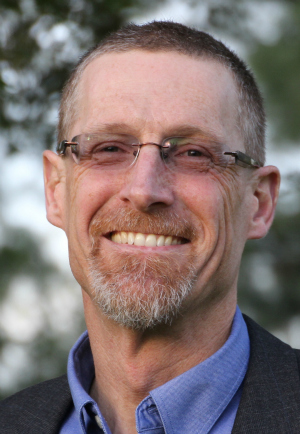As the country's political and cultural divides appear insurmountable, Chris Benner says hope can be found at the local and regional level, where coalitions have formed across racial, economic, and ideological chasms to overcome inequality and build opportunity.
Benner, a professor of environmental studies and sociology, studies economic growth and social justice.
He and his research partner Manuel Pastor (B.A., Merrill College, economics and literature, '78), a former faculty member at UC Santa Cruz who is now on the faculty at the University of Southern California, have led a decade-long research project focused on regional economic restructuring across the country. Their goal: to identify urban communities that have built their economies and bridged gaps in income, race, citizenship status, gender, education, and job training.
After reviewing data on nearly 200 U.S. cities, Benner and Pastor honed in on 11 regions that had tackled the challenges of growth, job stagnation, political and racial fragmentation, and educational and income disparities—and emerged with lessons to share with the rest of the country.
"At a moment when the nation is precariously divided, this work offers valuable lessons," said Benner. "Inequality is a pernicious and widespread problem, but people are joining forces and making progress."
Regional coalitions that have been successful in bridging equity and growth tend to be made up of people who hold different ideological perspectives, and who allow their decision making to be guided by data and information. "Yes, facts matter in these places," Benner said, smiling.
Participants typically include community activists, civic and business leaders, and elected officials, all of whom share a commitment to a common destiny and a long-term view of their region's future, he said.
Highlights from three regions that overcame obstacles:
San Antonio
The city overcame a persistent divide between activists and the business community that dated back to the 1970s and '80s. Advocates for low-income Chicano communities routinely squared off against business interests that controlled local government.
A switch to district elections changed the political landscape, and Mayor Henry Cisneros emerged as a bridge builder. In 1990, the closure of a Levi's factory cost 1,100 jobs; military downsizing followed. These jolts to the local economy spurred collaboration, with Ernie Cortes of Communities Organized for Public Service inspiring partnerships with community colleges and business leaders to build educational and job training programs. Project QUEST emerged as a national model for economic development.
"Today, the region is a model of collaborative leadership with a number of inspiring initiatives, particularly in long-range planning and early childhood education," said Benner.
Salt Lake City
Utah is undergoing a rapid demographic transformation, poised to become "majority minority" ahead of the rest of the country. Residents continue to welcome immigrants, perhaps a reflection of the Mormon emphasis on international programs that expose youth to other countries. The Mormon emphasis on a church-based social welfare system is evident across the state and Salt Lake City.
Programs and policies to benefit undocumented residents and the homeless are enacted with a "common sense" ease that escapes other regions: In 1999, the state began issuing drivers licenses to undocumented residents without controversy; Utah is also home to one of the country's most successful programs to address chronic homelessness. The "start with housing" approach opens the door to mental-health, substance-abuse, and job-training support, said Benner.
"The work of the nonprofit Envision Utah has also helped build a region-wide commitment to equitable and smart growth, and the region remains one of the most equitable in the country," he said.
Oklahoma City
Traditional economic development strategies failed Oklahoma City, which was unable to land a contract with United Airlines in the late 1980s despite offering a competitive package of economic incentives. According to lore, the wives of airline executives effectively scuttled the deal after they visited the city and found it lacking in "quality of life" measures.
Business leaders and the Republican mayor regrouped, shifting their focus to making Oklahoma City an appealing place to live. They advocated for a temporary sales-tax increase that took a "something for everyone" approach (projects included an opera house, a basketball arena, a convention hall, and a river redevelopment project) and won support from a broad range of conservative, generally anti-tax voters. After the projects came in on budget and essentially on time, voters approved two extensions of the tax.
"Yes, in conservative Oklahoma City, four Republican mayors in succession, a strongly conservative Chamber of Commerce, and a majority of voters approved increased taxes to address regional problems, as their commitment to place trumped their commitment to ideology," noted Benner.
"It's not like everything is perfect now, but these areas have shown that it's possible to come together, set common goals, do some heavy lifting, and make things better," said Benner. "That's such an important message today, when it's easy to feel discouraged by the national rhetoric of red versus blue, and worse."
These stories, and others around the country, offer valuable lessons for regions that want to chart their own paths and build a more vibrant, more equitable future, said Benner.
Benner and Pastor, a professor of sociology and American studies and ethnicity at USC, are co-authors of the 2015 book, Equity, Growth, and Community: What the Nation Can Learn from America's Metro Areas, which is available to download for free at: https://www.luminosoa.org/site/books/10.1525/luminos.6/. More information about their research is available online at http://growingtogethermetro.org.



